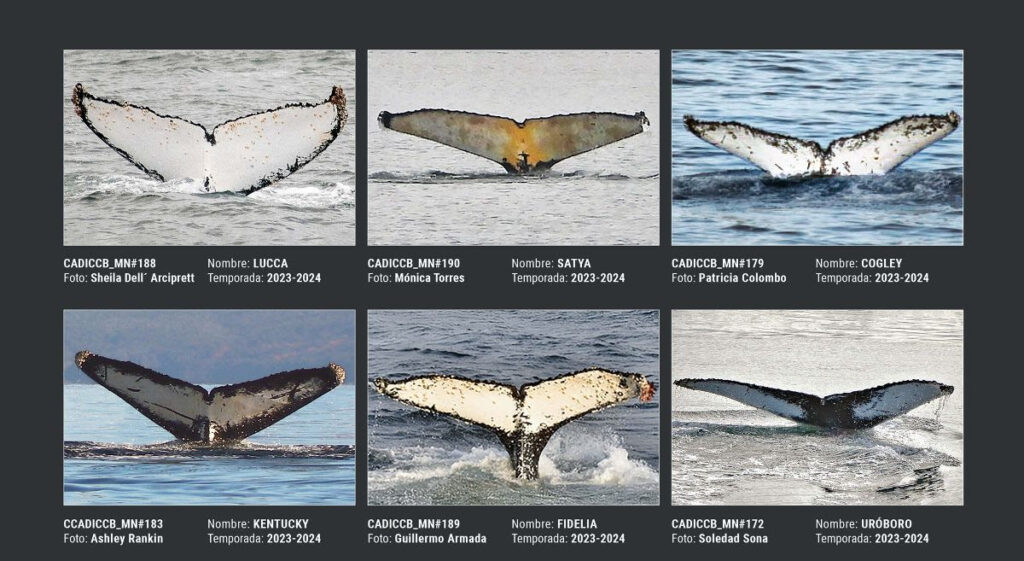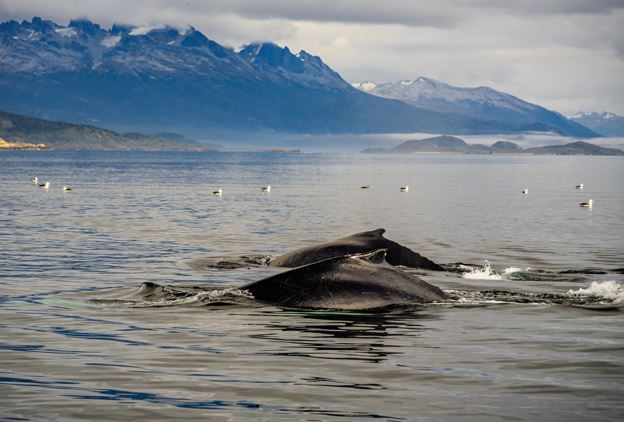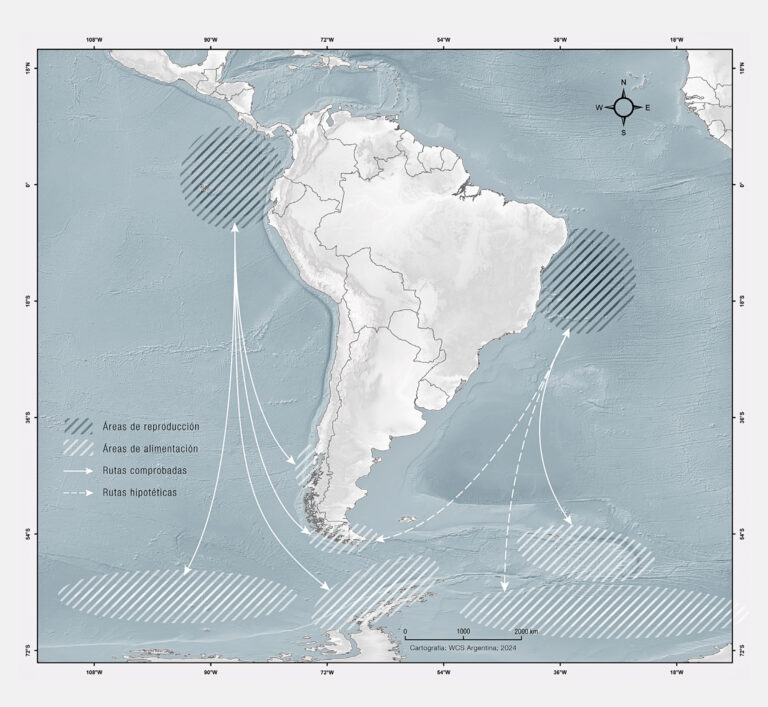A major breakthrough in conservation was recently announced. The new Humpback Whales catalog of the Beagle Channel was presented. This was done within the framework of World Whale Day, celebrated on the third Sunday of February.
The objective of this date is to promote the conservation of these large marine mammals.
These whales are recognized for their distinctive pectoral fins, their dorsal fin located above a small hump, and the complexity of their song, among other characteristics.
The new Humpback Whales catalog
“Between February and April 2013, a small group of humpback whales was seen in the waters of the Beagle, near Ushuaia,” recall the members of the Southern Marine Mammals Research Laboratory of the Austral Center for Scientific and Technical Research (CADIC-CONICET), Monica Torres, Agustina Dellabianca, and Natalia Dellabianca.
“Although their presence had been previously recorded, it was striking that they remained there for so long,” they add.
 The new catalog. (Photo: WCS).
The new catalog. (Photo: WCS).
They are co-authors of the new photo-identification catalog of humpbacks in the Beagle, which, with photographic contributions from more than 500 citizens from Tierra del Fuego, guides, and tourists engaging in activities in the channel, documents the sighting of 191 individuals between 2013 and 2024.
This citizen science initiative is led by the Southern Marine Mammals Research Laboratory of CADIC-CONICET and the Southern Marine Mammals Research Project (IMMA Project), with the support of the conservation organization WCS Argentina and the Onashaga Commitment.
How to recognize them
Each humpback whale has unique features in the tail or caudal fin that, when combined, can provide information about their identity, like fingerprints.
The main feature is the color pattern, ranging from completely white to completely black.
Other distinctive natural marks can be the shape and size of the edges and notches, scars, lines, circles, and spots. Photographic analysis allows identifying each animal by these distinctive features, thus generating a database.
 Humpback whales. (Photo: WCS).
Humpback whales. (Photo: WCS).
The identification of whales and their sustained monitoring allows determining the number of individuals entering the channel, variations between seasons, time spent in the area, and other demographic and ecological aspects of interest.
Moreover, comparing humpback whale catalogs from other regions can provide information on their migratory routes and life histories.
“Humpback whales are considered ‘sentinel species’ because they are sensitive to environmental changes. Therefore, by monitoring their behavior patterns, we can identify changes occurring in the marine ecosystem,” states Valeria Falabella, director of coastal marine conservation at WCS Argentina.
For over three decades, the organization has continuously supported researchers and scientific projects at CADIC-CONICET to jointly generate knowledge about species and ecosystems in Tierra del Fuego, Antarctica, and the South Atlantic Islands.
Citizen science at the end of the world
This initiative integrates photographic and film records obtained by citizens of Tierra del Fuego, captains, guides, photographers, and tourists visiting the area, with the systematic surveys conducted by the researchers.
The author of each photo resulting in the identification of a new individual is credited in the image and can choose a name for the whale they identified.
As part of the project, informational talks to the general public are held (mainly coordinated by the Onashaga Commitment), and printed catalogs are distributed.
A healthy sea to conserve whales
The humpback whale is a cosmopolitan species, meaning it inhabits and travels through various oceans worldwide.
 (Photo: WCS Argentina).
(Photo: WCS Argentina).
In South America, they migrate from feeding areas in temperate and cold southern waters to breeding areas in tropical and subtropical seas. Therefore, conserving the sea as a whole is necessary for the development of their entire ecological cycle.
This species faces threats such as vessel collisions, noise and waste pollution, entanglement in fishing nets, and the impacts of climate change.
Source: WCS Argentina

